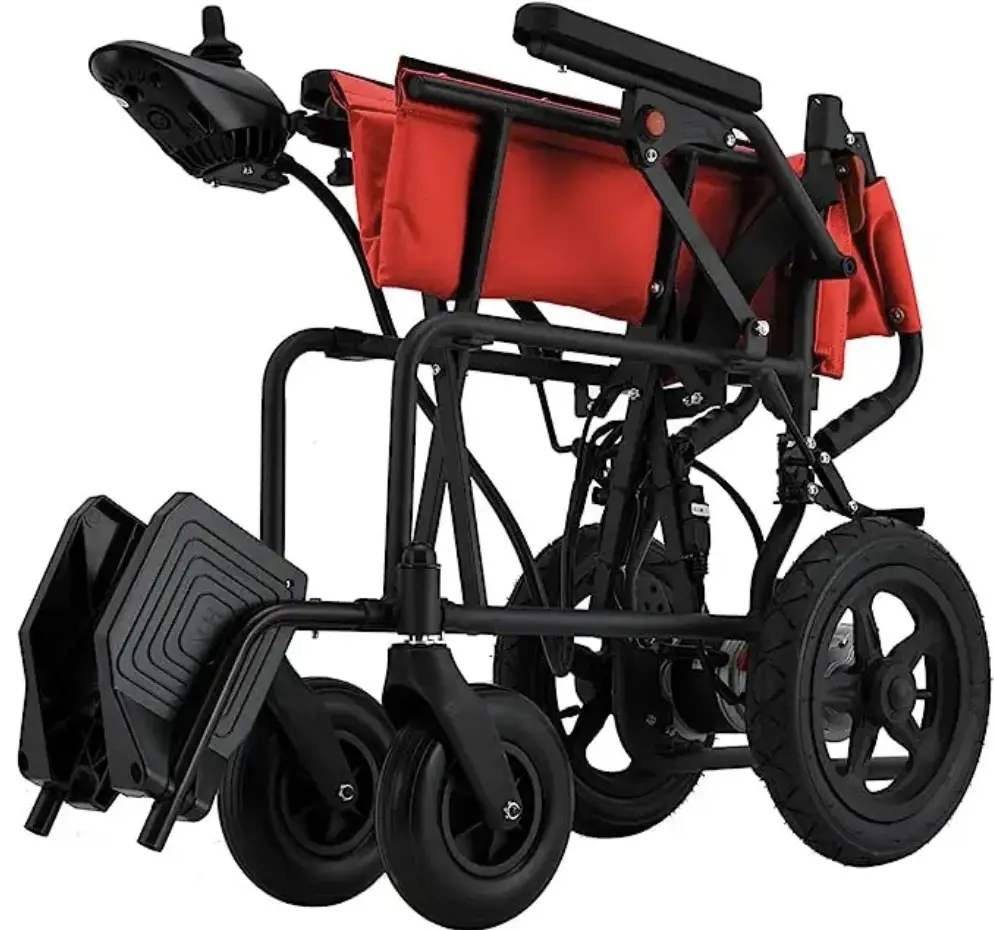electric wheelchairs have revolutionized mobility for people with disabilities, providing them with independence and freedom. However, as with any mechanical device, the life cycle of an electric wheelchair can be affected by a variety of factors. Understanding these factors is critical for users, caregivers, and manufacturers as it helps make informed decisions about maintenance, use, and replacement. In this article, we will explore the key factors that influence the life cycle of a power wheelchair.
1. Quality of materials and construction
The quality of the materials used in the construction of a power wheelchair plays an important role in its durability and longevity. High-quality metal, plastic and electronic components can withstand wear and tear better than cheaper alternatives. For example, a wheelchair made of lightweight aluminum may be more resistant to corrosion and damage than one made of lower-grade materials. In addition, the assembly process of the wheelchair will also affect its overall sturdiness. A well-constructed power wheelchair is likely to have a longer lifespan than one that is poorly made.
2. Battery life and maintenance
The battery is one of the most critical components of an electric wheelchair, and its longevity can significantly impact the overall life cycle of the device. Most power wheelchairs use lead-acid or lithium-ion batteries, each with its own characteristics. Lead-acid batteries tend to have a shorter lifespan and require regular maintenance, while lithium-ion batteries tend to have a longer lifespan and require less maintenance.
Proper battery maintenance is crucial to maximizing its lifespan. This includes charging regularly, avoiding deep discharges, and keeping the battery clean and free from corrosion. Users should also watch for signs of battery degradation, such as reduced range or slower charging times, and replace the battery if necessary to ensure optimal performance.
3. Usage mode
How a power wheelchair is used can greatly affect its life cycle. For example, frequent use on rough terrain can cause wheels, motors, and suspension systems to wear out more quickly. Instead, use your wheelchair primarily on smooth surfaces to extend its lifespan.
In addition, the weight of the user also affects the service life of the wheelchair. Heavier users may put more stress on the frame and motor, causing faster damage. Users must choose a wheelchair that is appropriate for their weight and follow the manufacturer’s usage guidelines to ensure optimal lifespan.
4. Maintenance and Repair
Regular maintenance is essential to extend the life of your power wheelchair. This includes routine inspections of the battery, wheels, brakes and electronic components. Users should follow the manufacturer’s maintenance schedule, which may include tasks such as lubricating moving parts, checking tire pressure, and checking electrical connections.
In addition to routine maintenance, timely repairs are also essential. Ignoring small problems can lead to more serious problems that may shorten the lifespan of your wheelchair. For example, a minor electrical issue that is not resolved can cause a complete motor failure, requiring expensive repairs or even replacement.
5. Environmental factors
The environment in which an electric wheelchair is used will also affect its life cycle. Exposure to extreme temperatures, humidity, and moisture can cause corrosion and damage to electronic components. For example, using a power wheelchair in a wet environment without proper protection can cause water damage, which can harm the electrical system.
Users should pay attention to the conditions under which the wheelchair is operated and take precautions to protect it from harsh environments. This may include using a cover, avoiding wet conditions and storing the wheelchair in a dry place when not in use.
6. Technological Progress
Rapid advances in technology in the mobility aid field can also impact the life cycle of power wheelchairs. Newer models may come with improved batteries, more efficient motors, and advanced features that enhance usability and comfort. As technology evolves, older models may become obsolete, causing users to consider upgrading sooner rather than later.
While it’s important to stay up to date on the latest developments, users should also weigh the benefits and costs of upgrading. In some cases, an older model that has been well maintained may still be effective in meeting the user’s needs, eliminating the need to invest in a new wheelchair.
7. User training and familiarization
User training and familiarity with a power wheelchair can significantly impact its life cycle. Users who are well trained in operating a wheelchair are less likely to make mistakes that could lead to damage. For example, knowing how to navigate uphill, downhill, and in tight spaces can prevent accidents that could damage your wheelchair.
Additionally, users should be made aware of the specific capabilities and limitations of their power wheelchair. This knowledge can help them use equipment more efficiently and avoid situations that could lead to premature wear or damage.
8. Manufacturer Support and Warranty
The level of support provided by the manufacturer also affects the life cycle of a power wheelchair. Reputable manufacturers will provide comprehensive customer service, including troubleshooting assistance, maintenance tips and replacement parts. Additionally, a good warranty can give you peace of mind, covering repairs or replacements for a specified period.
Users should research manufacturers and their support services before purchasing. Companies that stand behind their products are more likely to provide the necessary resources to help users maintain their power wheelchairs effectively.
in conclusion
The life cycle of an electric wheelchair is affected by a variety of factors, from the quality of materials and construction to user habits and environmental conditions. By understanding these factors, users can take proactive steps to extend the life of their power wheelchairs, ensuring they remain a reliable source of mobility and independence.
Regular maintenance, proper use and timely repairs are critical to maximizing the life cycle of your power wheelchair. Additionally, staying informed about technological advancements and manufacturer support can help users make informed decisions about their mobility aids. Ultimately, a well-maintained power wheelchair can provide many years of service and improve the quality of life of those who rely on it.
Post time: Oct-09-2024


